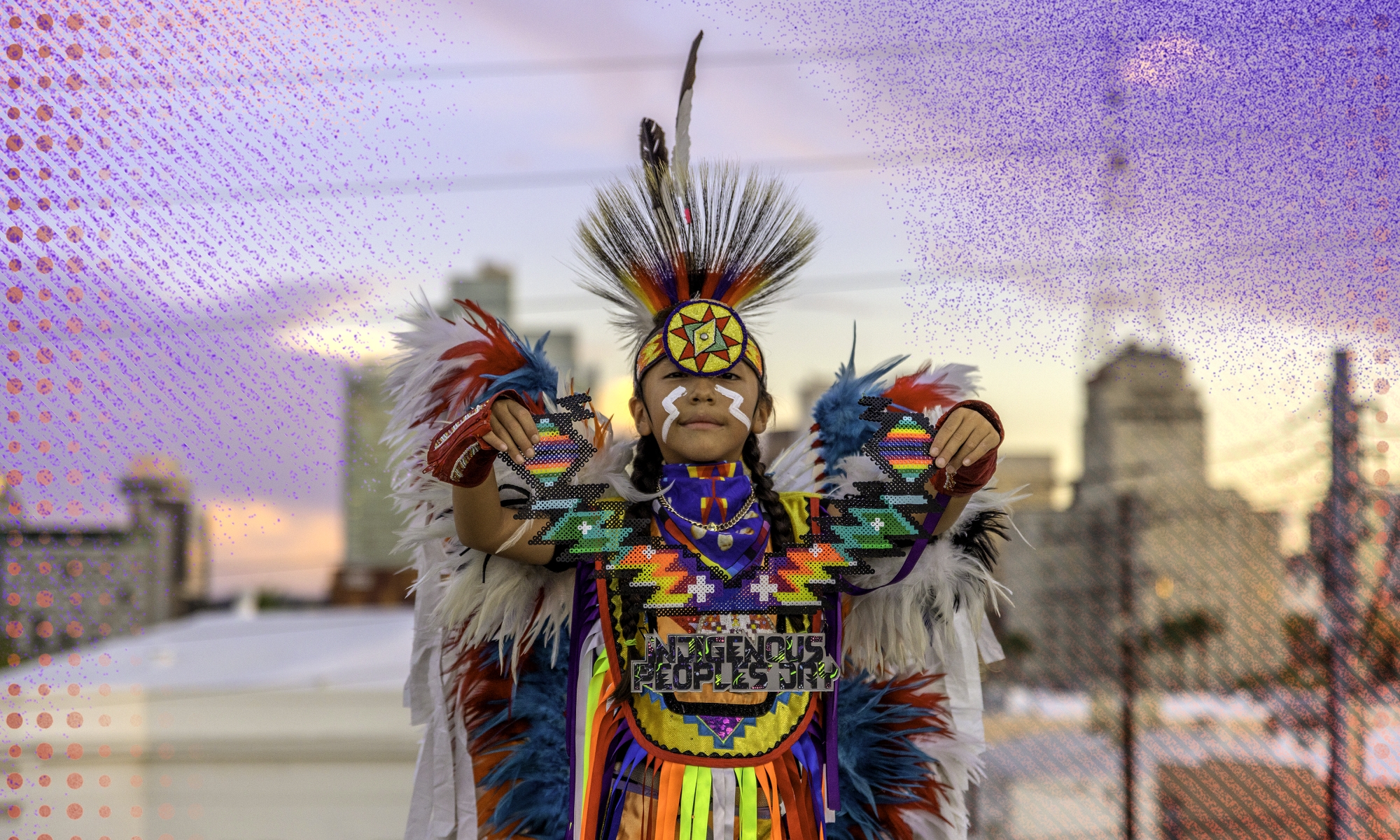Indigenous Christmas Tree Traditions

Many Indigenous families like to adorn their homes with Christmas trees. This is an occasion to offer gratitude, honour family and ancestors and follow ritual observations of regeneration connected to the winter solstice.
It’s believed the modern Christmas tree tradition started in Germany in the 1400s into the 1500s with a fir tree decorated as a Paradise Tree, tied to the Christian creation story of Adam and Eve. Its popularity soon spread to England.
Ancient Egyptians
Throughout history, people have used greenery in their homes during the winter solstice to symbolize life and renewal. One of the earliest examples is from the Egyptians, who worshipped the sun god Ra. At the solstice, they would decorate their homes with green palm rushes. These represented the return of the sun from the dark days of winter and a reminder that life would soon return to the land.
This custom was followed by the Romans, who used evergreen plants to celebrate Saturnalia. Later, the Druids and Vikings of Northern Europe also decorated their houses with evergreens. The modern Christmas tree is a European tradition, with the first one likely being erected in Germany by the 16th century. The German reformer Martin Luther is credited with popularizing the use of the Christmas tree.
Some groups such as RCG and WCG cite Jeremiah 10 to claim that Christmas trees are idols of Babylonian pagan deities. However, examining the historic sources and biblical interpretation of this verse makes it clear that these claims are erroneous.
Early Romans
Evergreen trees are popular for Christmas decoration because they symbolize the everlasting life of nature. They also have fertility properties, a symbol of the coming spring. The ancient Egyptians decked their houses and temples at the winter solstice with sprigs of date palm (Ra).
The use of Christmas trees can be traced back to pre-Christian/pagan traditions and also Roman celebrations for the god Saturnalia. Fir trees were used as a decoration in the Roman temples for this festival.
A modern legend is that Martin Luther, the 16th-century Protestant reformer, added lighted candles to a fir tree and thus started what we now think of as the modern Christmas tree. However, this seems to be a case of pareidolia: the human brain interprets patterns to match what is familiar.
The oldest record of a decorated Christmas tree is from a diary from 1605, when the Germans set up a fir tree in their homes and decorated it with paper roses, apples and gold covered wafers. This was a variation on the “paradise tree” which were used in medieval German Mystery or miracle plays that told Bible stories to people who couldn’t read.
Puritans
Christmas trees are a given in most households in North America today, but this wasn’t always the case. Evergreens and trees have been used in celebrations since prehistoric times, and the earliest incarnations of the holiday were largely pagan.
During the Reformation, Protestants like Martin Luther sought to rid Christianity of its “pagan” vestiges. He reworked the tree’s symbolism by putting candles on it, giving it more of a cosmic scope that pointed to heaven. He unintentionally brought the tree closer to its indigenous roots and perhaps even drew it closer to the Norse Yggdrasil, the tree that links the mortal and divine worlds.
But Puritans saw this as a dangerous frivolity and tried to put an end to Christmas celebrations. They viewed the holidays as pagan, Catholic, non-scriptural and socially disruptive. They viewed it as a time of disorder, drunkenness and often licentious behavior that inverted gender roles. This was a serious offense to their desire for an orderly society that valued chastity.
Americans
Many Americans were introduced to the Christmas tree by German settlers in the 18th century. They favored the open look of evergreen tips and hung them with apples, gilded nuts and strips of red paper. They were also the first to add lighted candles to their trees.
It’s possible your ancestors saw the image of the British royal family and their Christmas tree in an edition of Godey’s Lady’s Book, published in 1848. The woodcut image reached hundreds of thousands of people and permanently changed the way Americans kept their Christmas traditions.
In the Ojibwe culture of Wisconsin, a story is told of Kokum (Grandmother) who goes to get a Christmas tree for her family. When the grandchildren see the scrawny tree she brought home, they laugh at her and throw it away. But Kokum is a wise woman, and she takes the scrawny tree with her to her tepee for a special ceremony. This is where her grandchildren learn the value of being resourceful and creative when it comes to finding gifts for Christmas.